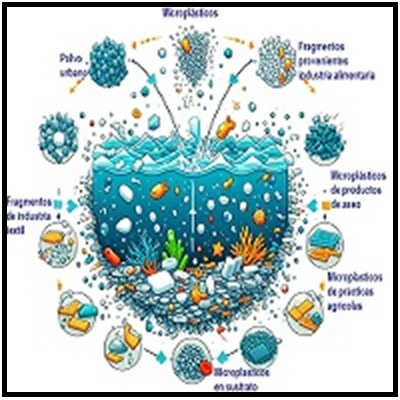Microplastics in continental water sources: impact and mitigation strategies from the perspective of agroindustrial engineering
Microplásticos en cuerpos de agua continentales: impacto y estrategias de mitigación desde la perspectiva de la ingeniería agroindustrial
DOI:
https://doi.org/10.24054/bistua.v22i1.2901Keywords:
Microplastic, Agro-industry, Impact, MitigationAbstract
Microplastic research is essential because of their global impact on aquatic ecosystems and human health. Despite the recognition of the problem, there remains a gap in the understanding and mitigation of these pollutants in inland water bodies. This study aims to analyse the state of knowledge on the presence, impact, and mitigation strategies of microplastics from an agro-industrial engineering perspective. A systematic qualitative methodology was employed to review the scientific literature, using specific inclusion criteria in various bibliographic databases, focusing on the search equation microplastic AND freshwater. The results reveal that microplastic pollution is a complex and multifaceted problem, with diverse emission sources affecting aquatic and terrestrial ecosystems. Industrial, agricultural, tourism and domestic activities all contribute to the release of microplastics into the environment. Understanding these sources is essential to develop effective mitigation and removal strategies, such as reducing their generation, recycling existing ones and immobilization to prevent their dispersal. The adoption of sustainable agricultural practices and efficient wastewater treatment systems is crucial in this process. The evaluation of these strategies through mathematical modelling considering the amount and type of microplastics generated, as well as their environmental impact. Successful implementation requires collaboration with farmers and ranchers to promote more sustainable practices. Although examples of implementation are presented, it is important to recognize the limitations and to further research together with relevant stakeholders to find more effective and sustainable solutions.
Downloads
References
Olivatto, GP, Carreira, R., Tornisielo, VL y Montagner, CC (2018). Microplásticos: contaminantes de preocupación mundial en el Antropoceno. Revista Virtual de Química.10(6),1968-1989. 10.21577/1984-6835.20180125
Sharma, S. y Chatterjee, S. (2017). La contaminación por microplásticos, una amenaza para el ecosistema marino y la salud humana: una breve reseña. Investigación sobre ciencias ambientales y contaminación, 24(27), 21530–21547. 10.1007/s11356-017-9910-8
Jambeck, J. R., Geyer, R., Wilcox, C., Siegler, T. R., Perryman, M., Andrady, A., Law, K. L. (2015). Plastic waste inputs from land into the ocean. Science, 347(6223), 768–771. doi:10.1126/science.1260352.

Additional Files
Published
Issue
Section
License
Copyright (c) 2024 © Autores; Licencia Universidad de Pamplona

This work is licensed under a Creative Commons Attribution-NonCommercial-NoDerivatives 4.0 International License.
© Autores; Licencia Universidad de Pamplona





